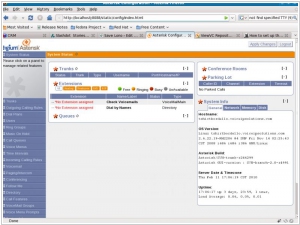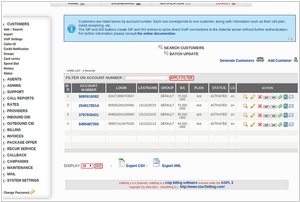Asterisk vs FreeSWITCH
July 29, 2023 | Author: Adam Levine
9

An open source telephony switching and private branch exchange service for Linux. Information on downloading, installation of and support for the product. Asterisk is like a box of Legos for people who want to create communications applications. It includes all the building blocks needed to create a PBX, an IVR system, a conference bridge and virtually any other communications app you can imagine.
Asterisk and FreeSWITCH are both popular open-source telephony platforms, but they have distinct differences that cater to different communication needs. Firstly, Asterisk, developed by Digium (now owned by Sangoma Technologies), is one of the oldest and most widely used open-source PBX systems. It offers a robust and mature platform that supports a variety of telephony protocols, making it compatible with a wide range of VoIP providers and hardware. Asterisk is known for its flexibility and extensive community support, allowing users to build customized communication solutions tailored to their specific requirements. On the other hand, FreeSWITCH, developed by a group of former Asterisk developers, boasts a modern and modular architecture, making it highly scalable and versatile. While both platforms are capable of handling voice and video communications, FreeSWITCH has a stronger focus on multimedia processing, making it an ideal choice for applications like conferencing, WebRTC, and real-time media manipulation.
Secondly, the configuration and programming languages used in both platforms differ significantly. Asterisk uses its own custom dialplan language, which can be challenging for beginners to grasp but provides fine-grained control over call routing and behavior. It also allows the use of external scripting languages like JavaScript and Python for more advanced features. In contrast, FreeSWITCH uses XML-based configuration files, which are often considered more straightforward and easier to manage. Additionally, FreeSWITCH supports multiple scripting languages, including Lua and JavaScript, giving users a variety of options for adding custom functionality.
Lastly, the communities and ecosystems around Asterisk and FreeSWITCH are distinct. Asterisk's community is vast and well-established, with numerous forums, tutorials, and extensions available, making it easier for users to find help and resources. The ecosystem includes various third-party products and integrations, making Asterisk a solid choice for businesses seeking a well-supported solution. FreeSWITCH, while still having a sizable community, is relatively newer and may have a smaller pool of resources compared to Asterisk. However, FreeSWITCH's modularity and multimedia capabilities have attracted a niche following, particularly in applications that require extensive media handling and real-time processing.
See also: Top 10 Business Phone systems
Secondly, the configuration and programming languages used in both platforms differ significantly. Asterisk uses its own custom dialplan language, which can be challenging for beginners to grasp but provides fine-grained control over call routing and behavior. It also allows the use of external scripting languages like JavaScript and Python for more advanced features. In contrast, FreeSWITCH uses XML-based configuration files, which are often considered more straightforward and easier to manage. Additionally, FreeSWITCH supports multiple scripting languages, including Lua and JavaScript, giving users a variety of options for adding custom functionality.
Lastly, the communities and ecosystems around Asterisk and FreeSWITCH are distinct. Asterisk's community is vast and well-established, with numerous forums, tutorials, and extensions available, making it easier for users to find help and resources. The ecosystem includes various third-party products and integrations, making Asterisk a solid choice for businesses seeking a well-supported solution. FreeSWITCH, while still having a sizable community, is relatively newer and may have a smaller pool of resources compared to Asterisk. However, FreeSWITCH's modularity and multimedia capabilities have attracted a niche following, particularly in applications that require extensive media handling and real-time processing.
See also: Top 10 Business Phone systems



